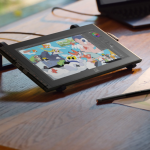The Shift to Remote Work Is More Than Just a Laptop
When people first think about working from home, they imagine setting up a comfy chair, opening a laptop, and calling it a day. But anyone who has actually done remote work knows it takes a bit more to stay productive, focused, and connected. Technology plays a huge role, but not every shiny gadget or new app is necessary. The trick is figuring out which tools actually help and which ones are just extra.
Let’s say you’re setting up your remote workspace somewhere in Colorado. Before you even pick your desk chair, you need to make sure you’ve got a reliable internet connection. Searching for internet services in Colorado will show you a long list of providers, but not all connections are created equal. Without stable and fast internet, even the best tools won’t matter much. Dropped calls, frozen screens, and slow downloads can turn a productive day into a frustrating mess.
Reliable Internet Connection: The Foundation of Everything
No matter what kind of work you do, a strong internet connection is non-negotiable. Remote work often means video meetings, large file transfers, cloud-based applications, and constant messaging. If your connection can’t handle these tasks smoothly, you’ll struggle to keep up.
For most remote workers, a download speed of at least 100 Mbps is a safe starting point, especially if others in your household are also online. Upload speeds matter too, particularly for video conferencing and cloud backups. Investing in a good router and regularly updating your equipment can also make a noticeable difference. It’s not just about speed, but also stability.
Communication Tools: Staying in the Loop
One of the biggest challenges of remote work is feeling disconnected from your team. That’s why strong communication tools are essential. Video conferencing platforms like Zoom or Microsoft Teams allow for face-to-face meetings, even if you’re miles apart. Chat apps like Slack or Google Chat make it easy to have quick conversations, share updates, and keep everyone on the same page.
The key is to find tools that fit your team’s style. Some teams prefer daily video check-ins, while others rely heavily on instant messaging and weekly calls. It’s not about using every tool available, but rather choosing the ones that help you communicate clearly and consistently without overwhelming everyone.
Project Management Software: Organizing the Chaos
When everyone is working from different locations, keeping track of tasks and deadlines can get messy fast. Project management software like Asana, Trello, or Monday.com helps teams stay organized. These platforms allow you to assign tasks, track progress, set deadlines, and keep all project details in one place.
This kind of transparency helps reduce confusion and ensures everyone knows what they’re supposed to be working on. It also makes it easier for managers to spot potential issues before they turn into big problems. Having clear visibility into projects builds accountability and reduces the endless back-and-forth emails that can bog down remote teams.
Cloud Storage: Access from Anywhere
One of the biggest perks of remote work is flexibility, but that only works if your files are accessible from wherever you are. Cloud storage solutions like Google Drive, Dropbox, or OneDrive make it easy to store documents, spreadsheets, and presentations in a centralized location.
With cloud storage, you don’t have to worry about sending huge email attachments or losing important files if your computer crashes. Everything is backed up automatically and can be accessed from any device. Many of these services also include built-in collaboration tools, allowing multiple team members to work on the same document at the same time.
Security Tools: Protecting Your Business and Data
Working remotely means handling sensitive company information outside the office, often on personal devices and home networks. This makes security a top priority. VPNs (Virtual Private Networks) create a secure tunnel for your internet traffic, keeping your data safe from prying eyes. Antivirus software adds another layer of protection against malware and cyber threats.
Multi-factor authentication is another simple but powerful tool. By requiring a second form of verification beyond just a password, it makes it much harder for unauthorized users to access your accounts. Regular training on phishing and other scams also helps keep your team alert to potential dangers.
Optional but Helpful Tools: The Nice-to-Haves
Beyond the essentials, there are plenty of tools that can make remote work even smoother, depending on your role and preferences. Noise-canceling headphones can be a lifesaver if you have a noisy home environment. A second monitor can boost productivity by giving you more screen space for multitasking. Time-tracking apps like Toggl or RescueTime help you stay aware of how you’re spending your workday.
Virtual whiteboard tools like Miro or MURAL are great for brainstorming sessions and creative collaboration, especially if your team is used to gathering around a physical whiteboard in the office. These tools help bring some of that energy into the digital space.
Avoiding Tech Overload: Keep It Simple
With so many options out there, it’s easy to fall into the trap of signing up for every new tool that promises to improve productivity. But too many tools can actually slow you down, creating confusion and tool fatigue. Start with the basics and only add new technology when there’s a clear need.
Talk to your team regularly about what’s working and what’s not. Sometimes a simpler tool works better than a more complicated one. The goal is to create a tech environment that supports your work rather than distracts from it.
Remote Work Success Starts with the Right Tools
Remote work has opened up incredible opportunities for flexibility and balance, but it also brings unique challenges. The right technology can make a huge difference in how successful and enjoyable the experience is for you and your team. Start with a strong internet connection, then build out your toolkit with communication, project management, cloud storage, and security solutions.
By focusing on the essentials and being thoughtful about which tools you adopt, you can create a remote work setup that keeps you connected, productive, and ready for whatever your workday throws at you.

Dilawar Mughal is an accomplished author with a passion for storytelling. His works span various genres, from thrilling mysteries to heartfelt romance novels. With a keen eye for detail and a knack for character development, Sana Fatima weaves engaging narratives that captivate readers and transport them to new worlds.










